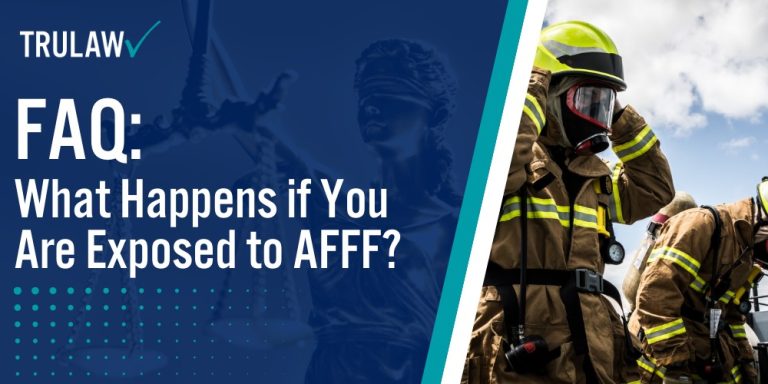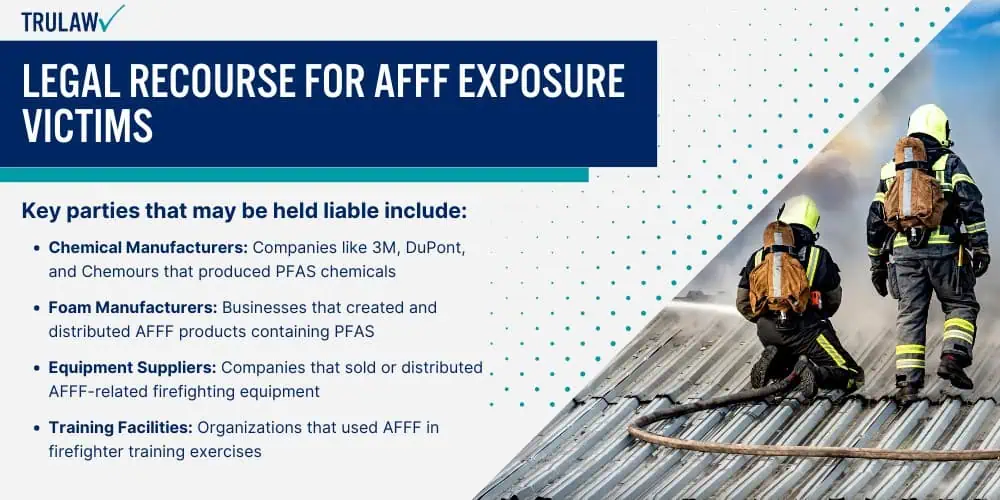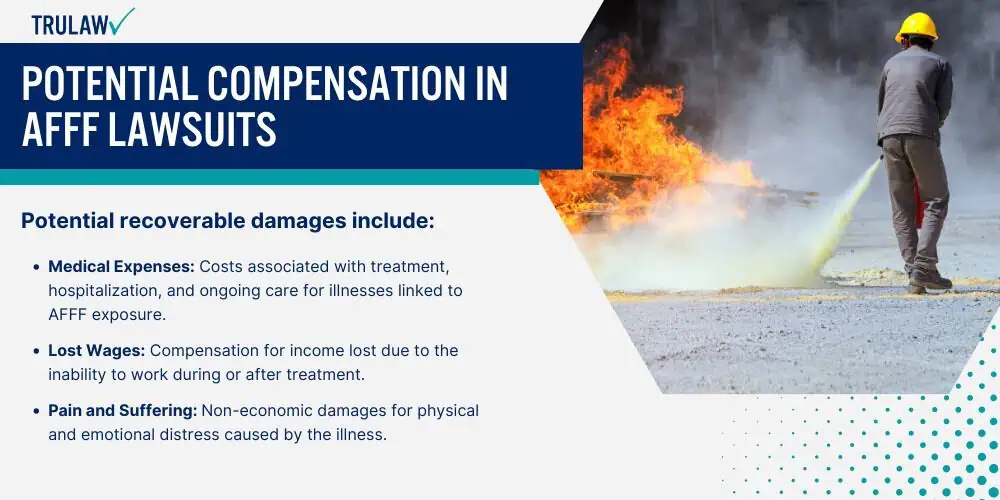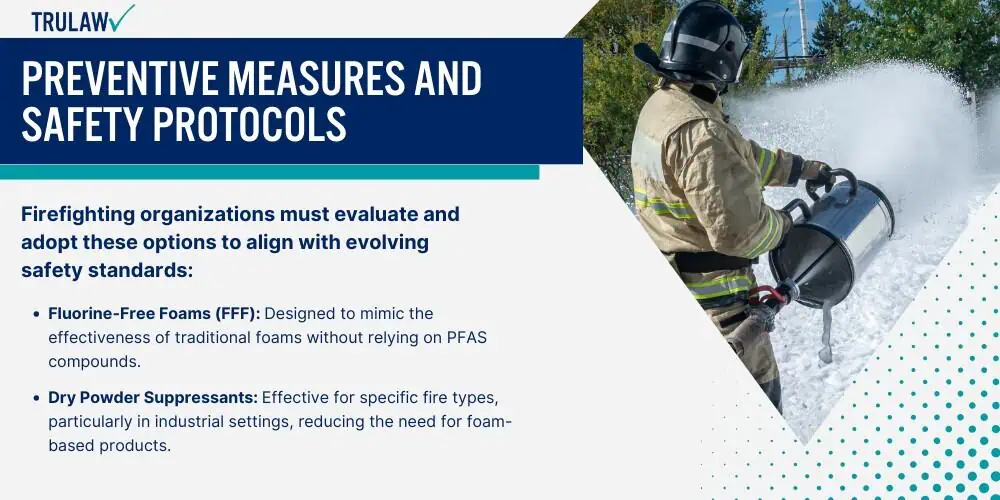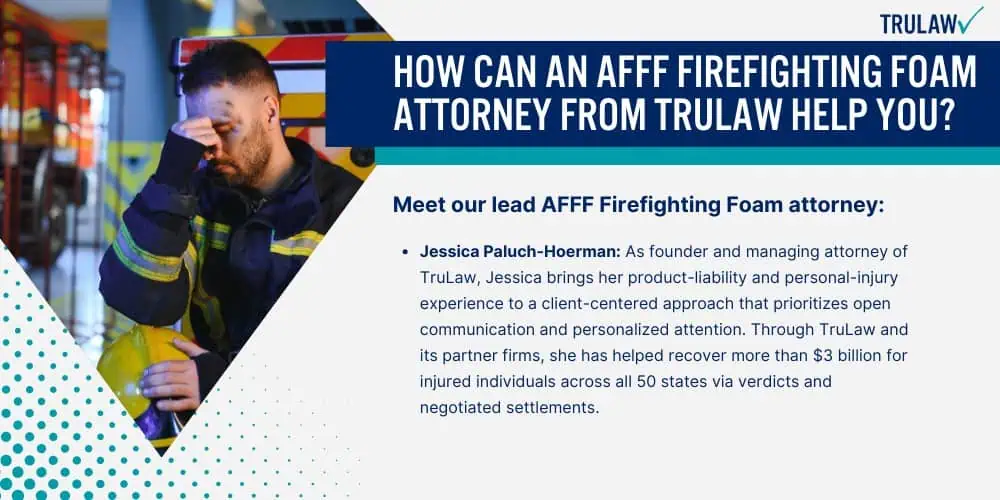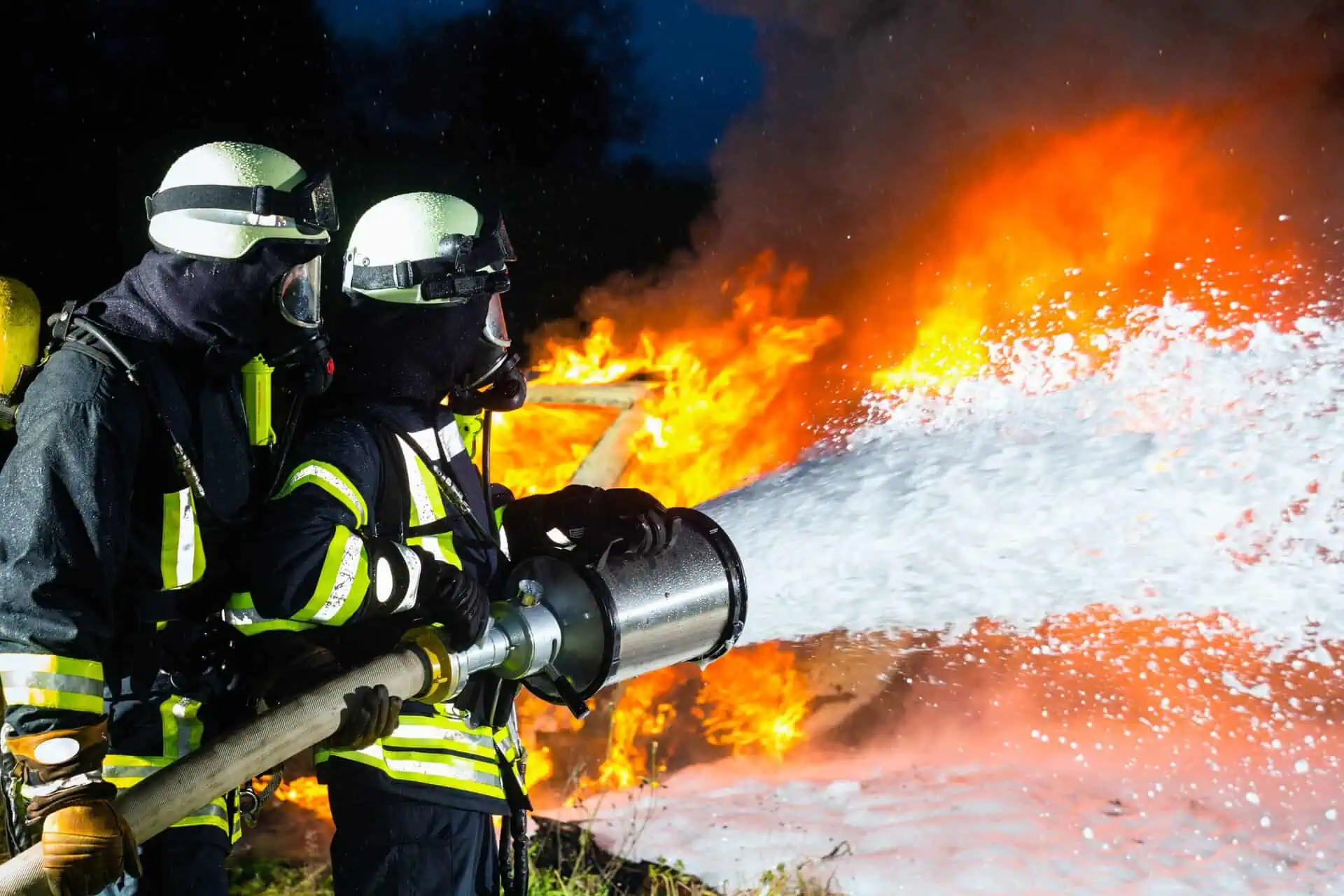Long-term exposure to AFFF (Aqueous Film-Forming Foam) has been linked to several types of cancer due to its containing PFAS chemicals, often called “forever chemicals” because they persist in both the environment and human body.
These dangerous substances can accumulate over time, leading to serious health complications and increased cancer risks for those regularly exposed to the firefighting foam.
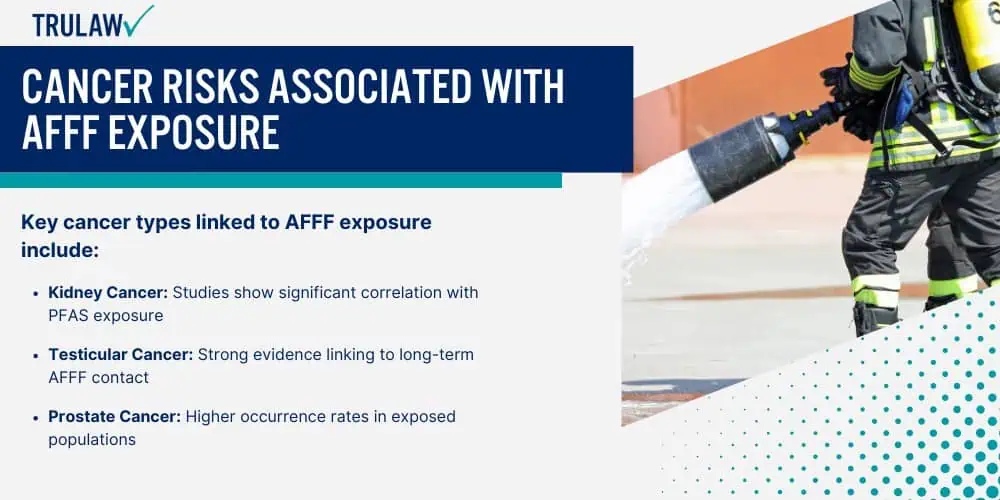
Scientific Evidence Supporting AFFF-Cancer Connection
According to research by Harvard T.H. Chan School of Public Health there is compelling evidence linking PFAS exposure to various forms of cancer.
The groundbreaking C8 Health Project has also established probable links between PFAS exposure and several cancer types.
Key cancer types linked to AFFF exposure include:
- Kidney Cancer: Studies show significant correlation with PFAS exposure
- Testicular Cancer: Strong evidence linking to long-term AFFF contact
- Prostate Cancer: Higher occurrence rates in exposed populations
- Thyroid Cancer: Increased risk due to endocrine system disruption
These cancer types have been consistently observed in populations with significant PFAS exposure, particularly among individuals who regularly worked with or were exposed to AFFF.
The National Institute of Environmental Health Sciences (NIEHS) has documented how these chemicals persist in the body, potentially leading to cancer development years after initial exposure.
Occupational Hazards and High-Risk Professions
Research by Silent Spring Institute and the Environmental Protection Agency (EPA) has identified specific occupational groups facing elevated risks of PFAS exposure through AFFF use.
Professions with highest AFFF exposure risk:
- Firefighters: Regular exposure during training and emergency response
- Military Personnel: Frequent use in aircraft fire suppression
- Airport Workers: Routine exposure during fire safety operations
- Industrial Fire Brigade Members: Regular contact during facility protection
These occupational groups face heightened cancer risks due to their repeated exposure to AFFF in both training and real-world applications.
These findings have prompted increased scrutiny of workplace safety protocols and protective measures for those regularly handling firefighting foam.
